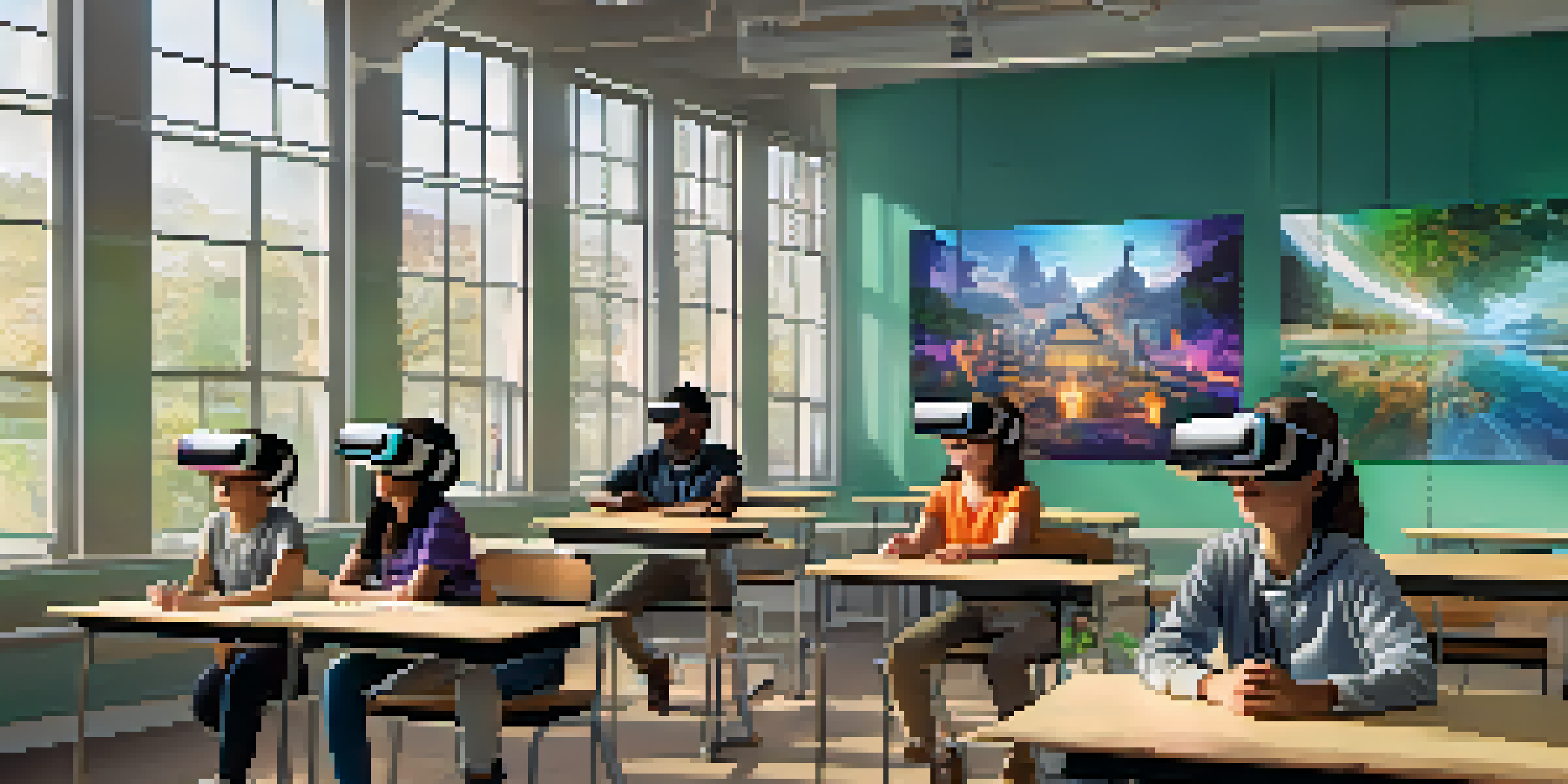Utilizing Virtual Reality in Blended Learning Approaches

Understanding Blended Learning and Its Benefits
Blended learning combines traditional classroom methods with online digital media, creating a more flexible learning environment. This approach allows educators to incorporate different teaching styles, catering to diverse learning preferences. By leveraging both in-person and virtual resources, students can engage more deeply with the material and retain information more effectively.
What is Virtual Reality and How Does It Work?
Virtual reality (VR) immerses users in a computer-generated environment, allowing them to interact with 3D spaces as if they were real. Using VR headsets and sometimes additional equipment, users can explore various scenarios, making learning more engaging and memorable. This technology can simulate real-world experiences, making it perfect for practical subjects like science, medicine, and engineering.
Blended Learning's Flexibility
Blended learning merges traditional methods with online resources, catering to diverse learning styles.
The Role of Virtual Reality in Enhancing Engagement
One of the standout features of VR is its ability to capture students' attention. When learners don a VR headset, they are transported to an interactive world that feels real, which can ignite curiosity and enthusiasm. For instance, studying ancient civilizations can become an adventure, allowing students to 'walk' through historical sites rather than just reading about them in a textbook.
Real-World Applications of VR in Education
Many educational institutions have already started to integrate VR into their curricula. For example, medical students can practice surgeries in a risk-free environment, gaining hands-on experience without the potential dangers. Likewise, language learners can immerse themselves in virtual environments where they can practice conversation skills with AI-driven avatars, enhancing their language acquisition.
VR Enhances Student Engagement
Virtual reality captivates students by immersing them in interactive environments that spark curiosity.
Challenges of Integrating VR into Blended Learning
While the benefits of VR in education are clear, there are challenges to consider. The cost of VR equipment can be prohibitive for some schools, and not all educators are trained to implement this technology effectively. Additionally, there may be concerns about accessibility for students with disabilities or those who may not have access to the necessary technology at home.
Best Practices for Implementing VR in Blended Learning
To effectively integrate VR into a blended learning approach, educators should start small. Begin by piloting VR experiences in a few classes, gathering feedback from students to refine the process. Collaboration with tech experts can also help teachers choose the right tools and create meaningful content that aligns with learning objectives.
Challenges of VR Integration
While VR offers educational benefits, issues like cost, accessibility, and teacher training must be addressed.
The Future of VR in Educational Settings
As technology continues to evolve, the potential for VR in education is immense. Future advancements could lead to more affordable equipment and more immersive experiences, allowing for even greater engagement. Imagine a classroom where students can explore the depths of the ocean or the surface of Mars—this is the future of learning that VR promises.
Conclusion: Embracing Change for Enhanced Learning
Integrating virtual reality into blended learning approaches can revolutionize education, making it more engaging and effective. While challenges exist, the potential rewards are worth the effort. By embracing this technology, educators can provide richer learning experiences that prepare students for an increasingly digital world.